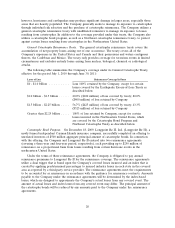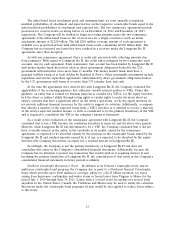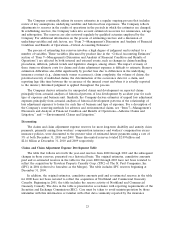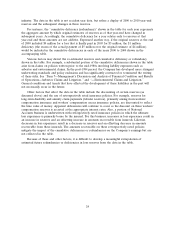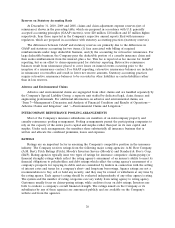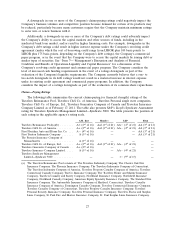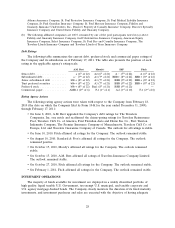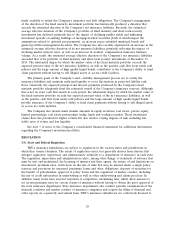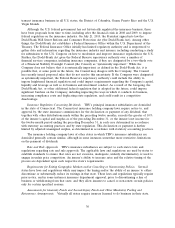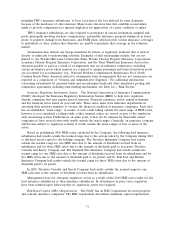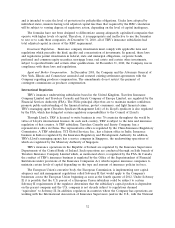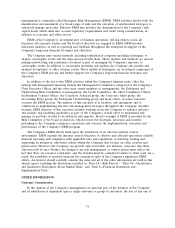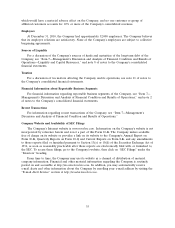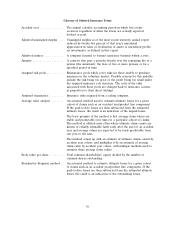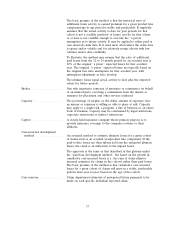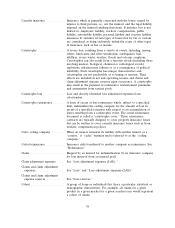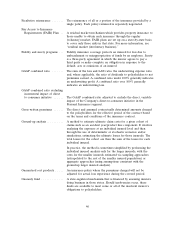Travelers 2010 Annual Report Download - page 42
Download and view the complete annual report
Please find page 42 of the 2010 Travelers annual report below. You can navigate through the pages in the report by either clicking on the pages listed below, or by using the keyword search tool below to find specific information within the annual report.transact insurance business in all U.S. states, the District of Columbia, Guam, Puerto Rico and the U.S.
Virgin Islands.
Although the U.S. federal government has not historically regulated the insurance business, there
have been proposals from time to time, including after the financial crisis in 2008 and 2009, to impose
federal regulation on the insurance industry. On July 21, 2010, the President signed into law the
Dodd-Frank Wall Street Reform and Consumer Protection Act (the Dodd-Frank Act). Among other
things, the Dodd-Frank Act establishes a Federal Insurance Office within the U.S. Department of the
Treasury. The Federal Insurance Office initially has limited regulatory authority and is empowered to
gather data and information regarding the insurance industry and insurers, including conducting a study
for submission to the U.S. Congress on how to modernize and improve insurance regulation in the U.S.
Further, the Dodd-Frank Act gives the Federal Reserve supervisory authority over a number of
financial services companies, including insurance companies, if they are designated by a two-thirds vote
of a Financial Stability Oversight Council (the Council) as ‘‘systemically important.’’ While the
Company does not believe that it is systemically important, as defined in the Dodd-Frank Act, it is
possible that, at some point in the future, the Council may disagree with the Company. The Council
has recently issued proposed rules that do not resolve this uncertainty. If the Company were designated
as systemically important, the Federal Reserve’s supervisory authority could include the ability to
impose heightened financial regulation and could impact requirements regarding the Company’s capital,
liquidity and leverage as well as its business and investment conduct. As a result of the foregoing, the
Dodd-Frank Act, or other additional federal regulation that is adopted in the future, could impose
significant burdens on the Company, including impacting the ways in which it conducts its business,
increasing compliance costs and duplicating state regulation, and could result in a competitive
disadvantage.
Insurance Regulation Concerning Dividends. TRV’s principal insurance subsidiaries are domiciled
in the state of Connecticut. The Connecticut insurance holding company laws require notice to, and
approval by, the state insurance commissioner for the declaration or payment of any dividend, that
together with other distributions made within the preceding twelve months, exceeds the greater of 10%
of the insurer’s capital and surplus as of the preceding December 31, or the insurer’s net income for
the twelve-month period ending the preceding December 31, in each case determined in accordance
with statutory accounting practices and by state regulation. This declaration or payment is further
limited by adjusted unassigned surplus, as determined in accordance with statutory accounting practices.
The insurance holding company laws of other states in which TRV’s insurance subsidiaries are
domiciled generally contain similar, although in some instances somewhat more restrictive, limitations
on the payment of dividends.
Rate and Rule Approvals. TRV’s insurance subsidiaries are subject to each state’s laws and
regulations regarding rate and rule approvals. The applicable laws and regulations are used by states to
establish standards to ensure that rates are not excessive, inadequate, unfairly discriminatory or used to
engage in unfair price competition. An insurer’s ability to increase rates and the relative timing of the
process are dependent upon each respective state’s requirements.
Requirements for Exiting Geographic Markets and/or Canceling or Nonrenewing Policies. Several
states have laws and regulations which may impact the timing and/or the ability of an insurer to either
discontinue or substantially reduce its writings in that state. These laws and regulations typically require
prior notice, and in some instances insurance department approval, prior to discontinuing a line of
business or withdrawing from that state, and they allow insurers to cancel or non-renew certain policies
only for certain specified reasons.
Assessments for Guaranty Funds and Second-Injury Funds and Other Mandatory Pooling and
Reinsurance Arrangements. Virtually all states require insurers licensed to do business in their state,
30


